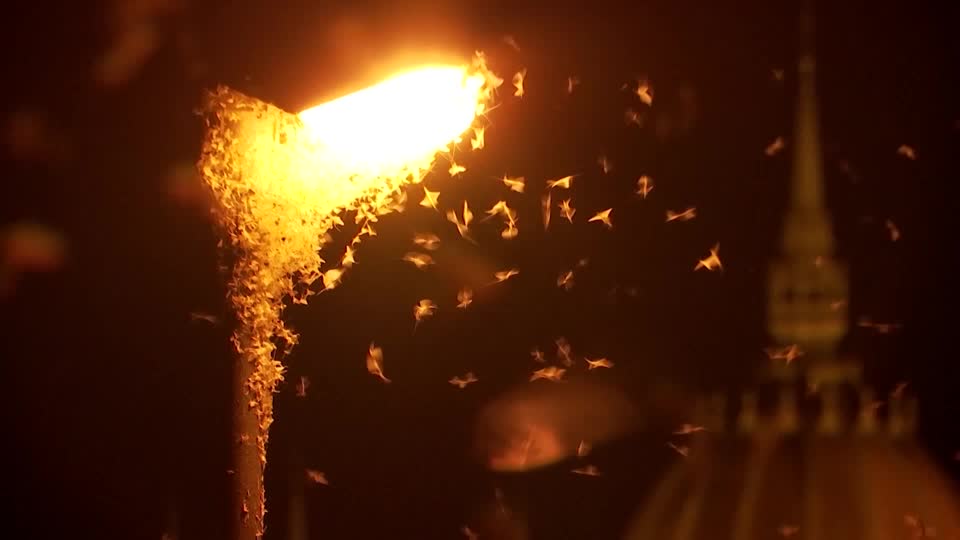STORY: :: Mayflies swarm the river Danube earlier than usual and in greater numbers
:: Budapest, Hungary
:: July 23, 2025
:: Gyorgy Kriska, Associate Professor, Eotvos Lorand University
“Since 2012 we have seen huge swarming in those years when the water levels are quite low. We think it is because the sun lights the riverbed more and the algae can breed more and that way the larvae find more food.”
:: Researchers put up special blue lights to guide the mayflies, which get confused by city lights
:: July 26, 2025
“What our lights are doing is that they keep them here, they don’t let them fly above so they keep swarming around the lights, and often a swirl of insects form around the lights, which reaches the surface of the water and they splash into the water. Where the mayflies reach the water they place their eggs there. What we can achieve is that they stay in place over the water and the next generation is saved. They cannot go further up but at least their offspring survive.”
:: Mayflies, a protected species in Hungary, live for less than a day after they hatch
Hundreds of thousands, sometimes millions, of mayflies engage in a frantic rush to mate and reproduce before they perish within just a few hours. Mayflies live for less than a day after they hatch, and their abundance is closely connected to the health of the Danube.
Danube mayflies usually start swarming in August, but this year it began in mid-July, and is expected to last for weeks.
Danube mayflies, a protected species, did not swarm for about four decades as the river was too polluted. They returned in 2012 when the Danube became cleaner due to the construction of wastewater treating plants, he added.
As mayflies swarm upriver after mating, they can be confused by city lights or the shadows of bridges, causing them to crash on the riverbank instead of laying their eggs in the water.
To help them as much as possible, Hungarian researchers installed special blue lights on two bridges.


